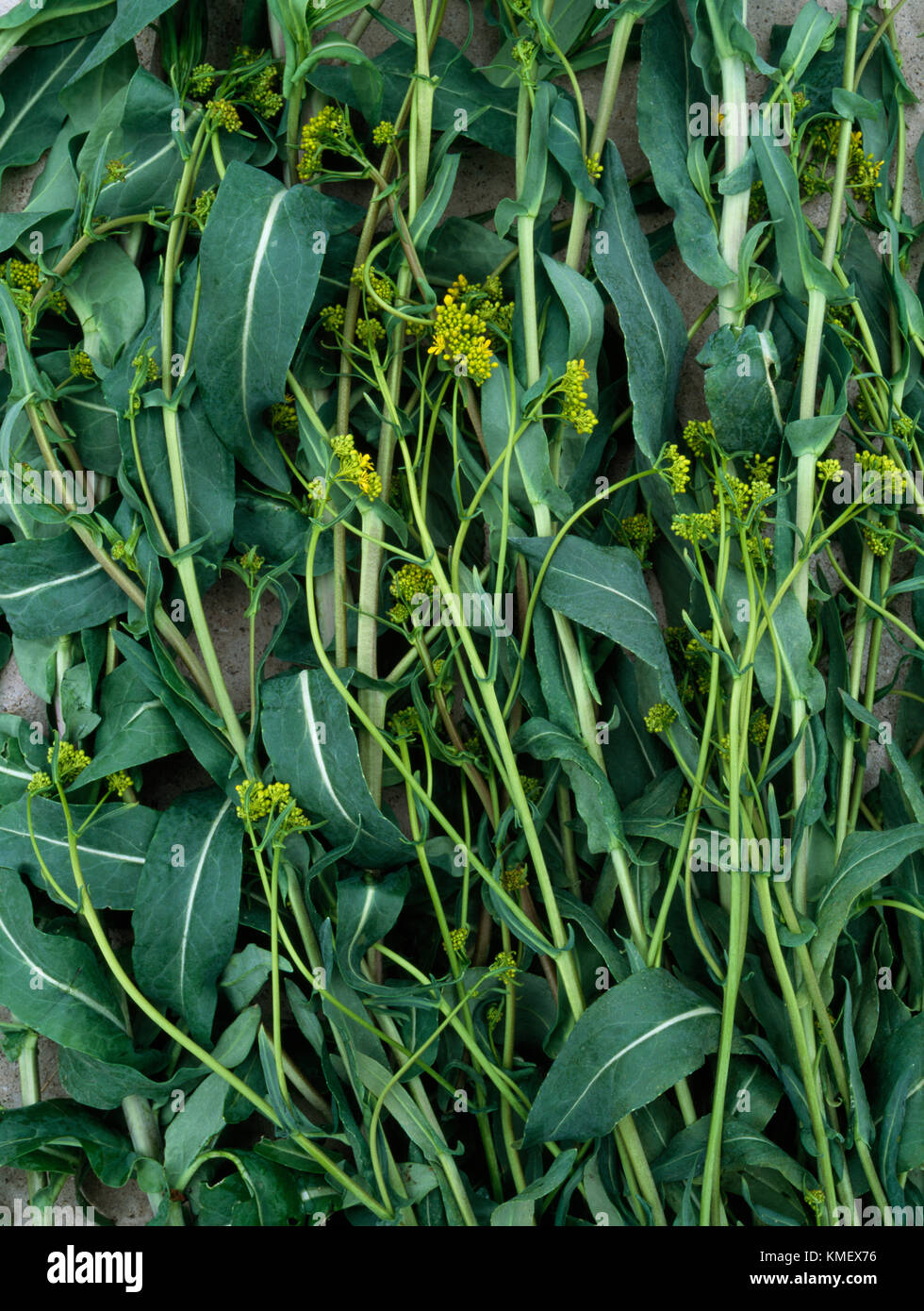Isatis tinctoria, also called Dyer's Woad, Biannual brassica plant, from which blue dye Woad is made. Cut stems, leaves and flowers.

Image details
Contributor:
Jean Williamson / Alamy Stock PhotoImage ID:
KMEX76File size:
53.1 MB (2.7 MB Compressed download)Releases:
Model - no | Property - noDo I need a release?Dimensions:
3741 x 4961 px | 31.7 x 42 cm | 12.5 x 16.5 inches | 300dpiDate taken:
May 2003Location:
Llanberis, North Wales, UkMore information:
Isatis tinctoria, also called Woad, Dyer's Woad, or glastum, is a flowering plant in the family Brassicaceae (cabbage). These stems cut in May from a plant grown in North Wales, UK. Woad is also the name of a blue dye produced via a process of fermentation. It contains indigotin, the same dye principal as Indigo but not in the same concentration so fell out of commercial use when Indigo, Indifoera tinctoria, was introduced to Europe and America from the Far East. Traces of Woad found on Neolithic sites and is famous as the dye that Celts reputedly painted their bodies with. Last commercial harvest in Lincolnshire 1932. Is still used in inks, especially ink jet printers.